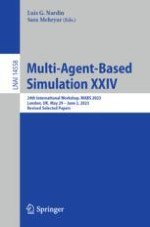2024 | Buch
Multi-Agent-Based Simulation XXIV
24th International Workshop, MABS 2023, London, UK, May 29 – June 2, 2023, Revised Selected Papers
herausgegeben von: Luis G. Nardin, Sara Mehryar
Verlag: Springer Nature Switzerland
Buchreihe : Lecture Notes in Computer Science
